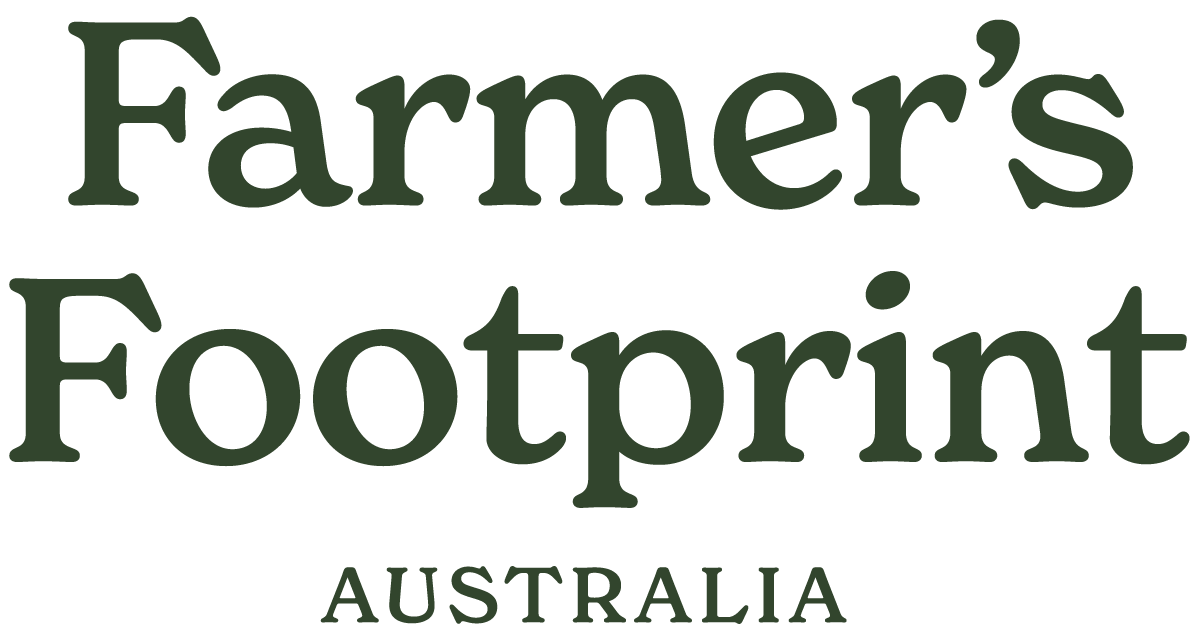Farm Yarns
Woodstock Flour
Berrigan, New South Wales
We want to be seeing more than just financial returns. We want to feel like we’re contributing to the diversity of both our ecosystem and our community.
Farm Yarns This feature was a collaboration between Courtney Young, Ian Congdon and Farmer’s Footprint Australia.
For the Love of Food, Flour and Farming
Courtney and Ian were born into farming families. An upbringing on the land spurred them to pursue environmental studies leading to career paths embed in conservation.
Thanks to their respective farming backgrounds, they knew the challenges of growers first hand. Meeting during their university studies, they developed the shared belief that the best way to achieve meaningful impact for the long term health of our environment was through land management.
In Australia, approximately 55% of land use is agricultural, majority of which is large scale. Farming as a family, would mean the development of a new business model. One that would employ value-adding to complement their resilience based agricultural practices, ensuring strength and security. From this, we saw one of Australia’s first micro-mills born, and the journey it has brought them and their community along the way.
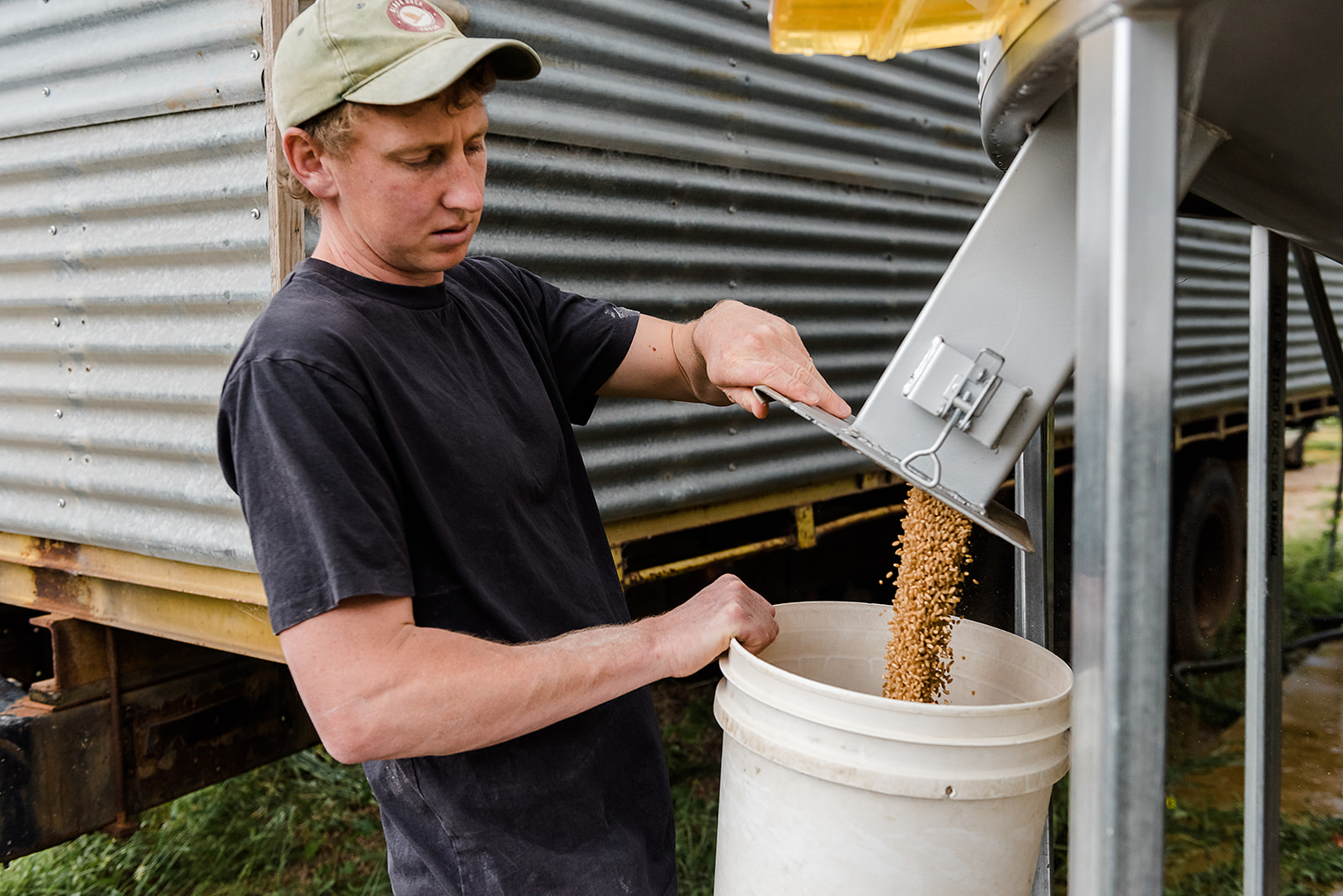
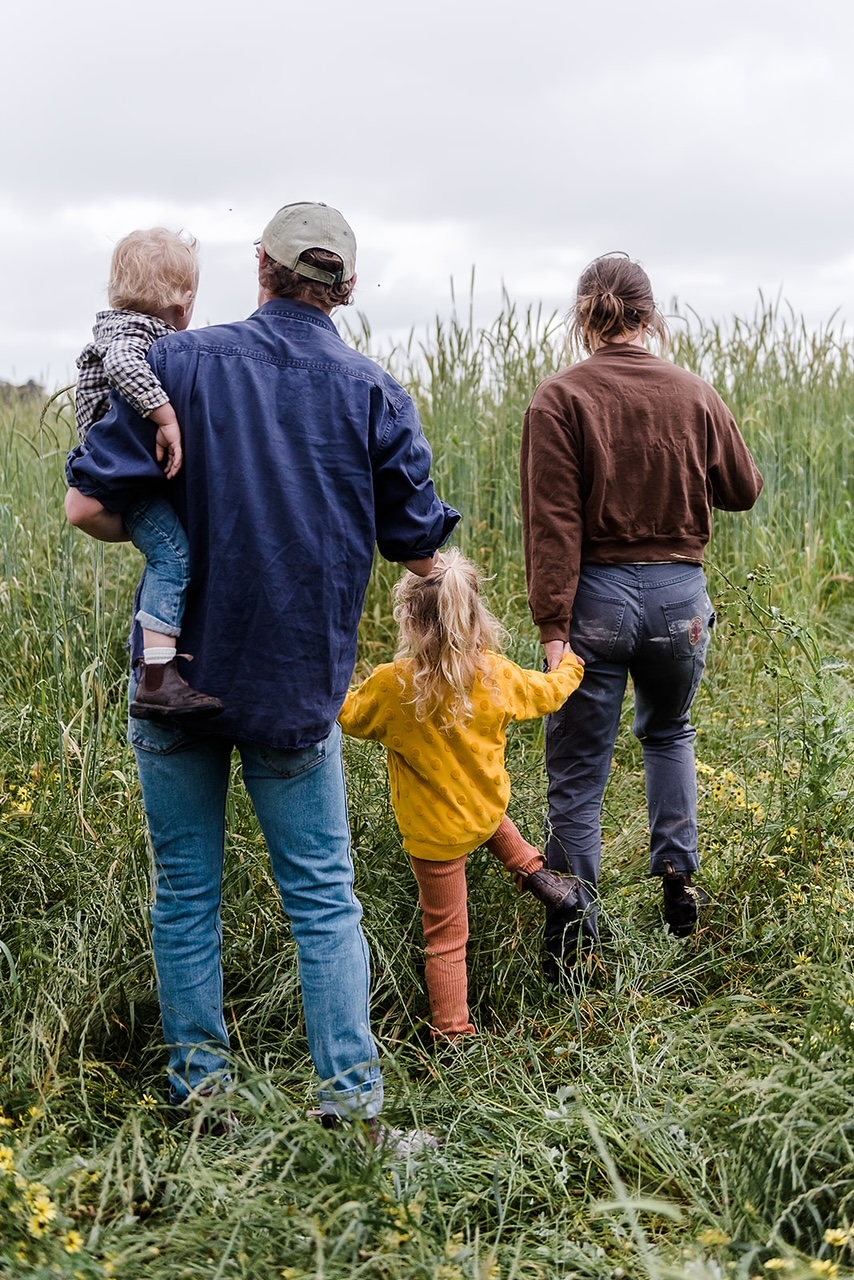
We were interested in environmental conservation and land management but came to see farming as the most effective way to create environmental change.
- Courtney Young & Ian Congdon
You’ve both come from farming families, what was the catalyst to move from growers to producers and begin milling flour?
Ian comes from an organic family farm in Berrigan where his parents run sheep, cattle and produce a bunch of cereals. Courtney grew up on the far south coast of NSW where her Dad was an oyster farmer and her mum was a teacher.
We both studied environments at Melbourne University where we met. We were interested in environmental conservation and land management but came to see farming as the most effective way to create environmental change. It made sense to us to learn how to farm in a way that is environmentally beneficial (while providing healthy food to our community), rather than locking up land for conservation and turning a blind eye to how farmland is treated.
But as young people with little capital, we couldn’t imagine farming without value adding what we produce. We saw an opportunity with grain as there weren’t many farmers direct-marketing grain at the time. Grain was considered the last frontier of the local food movement. And so we started buying organic grain off Ian’s folks and milling it at farmers markets, all with the view that we would be processing our own grain in the future.
Describe your business model and how it might differentiate from other mills?
We will soon be milling the grain we grow on our little farm in Rutherglen, VIC but most of our grain is still purchased from Ian’s parents in Berrigan, NSW. We provide them a premium price of around $750/tonne. They store most of the grain for us, and we arrange for it to be cleaned. Depending on the year, Ian’s parents will grow what we’re interested in buying. We like being able to support Ian’s parents and we feel confident about using their grain in our flour because we know how it was farmed.
What principles of regenerative agriculture do you employ in your practice?
On our farm in Rutherglen, we are in the process of applying for Organic Certification. We know that organic farming alone is not enough for building our farm’s soils, resilience and biodiversity, but our customers respect the certification. We don’t use any synthetic inputs and we are experimenting with mixed species crops (this year was wheat with clover, and rye with lucerne), short fallows and no-kill cropping. We are currently working out our cropping rotation for the next 5-10 years which will include a diverse mix of cereals and mixed species cover crops.
We are also experimenting with vermicast and other biological amendments to help kick things along. Alongside the cropping, we integrate a small mob of sheep in our system, using holistic management principles. We move our sheep every 3 days to maximise disturbance, plant recovery and sheep nutrition.
We saw an opportunity with grain as there weren’t many farmers direct-marketing grain at the time. Grain was considered the last frontier of the local food movement.
What does provenance mean to you and how is it woven into your business?
Provenance for us is respecting where and in what year a grain was grown, and what variety was sown. It’s about appreciating its distinctiveness. Our wheat changes year to year, with our bakers often having to adjust recipes to make up for changes in protein and moisture content. The flavour also changes. Some years our rye will taste more floral than others. With our bakers we try to communicate these variances, but often they’ll be the ones telling us, which we love. In terms of our packaging, we’re also trying to provide information on our labels about where the grain was grown.
How do the practices you employ on your farm inform not just the flavour but the resilience of the grains you grow?
We’re still learning! But we hope that by prioritising our soil health (through crop diversity, ground cover, animal integration and reduced tillage and fallows) we will improve the resilience of our farm. We’ll be able to store more carbon which will support our system during drought and flood, and produce higher yielding crops. We also understand that a nutrient rich soil profile will translate to nutrient rich crops (which equals flavour!).
The Mill-ion Dollar Question – How Does it Taste?
How do these practices and flavour profiles differ from traditional conventionally grown wheat in Australia?
We’re not often given the opportunity to understand the flavour of conventionally grown wheat because it’s rarely available in the form of freshly milled, stoneground flour where its flavour would be most discernible.
Conventional wheat is often processed by the larger mills where it is judged by protein, not flavour, and combined with thousands of other wheat varieties from all over Australia. So, any distinction in flavour is diluted.
There is also the argument that on most conventional farms, the soil is lacking in micronutrients which means the grain that is produced on these farms would be lacking micronutrients too.
Micro Milling Major Challenges
What was your greatest challenge when setting up a micro-mill?
There were so many! Access to three phase power to operate our mill was a big challenge as we are farm based. But grain storage is also a big challenge- we obviously store our grain organically which means we are constantly trying to keep on top of weevils. We use CO2 and fans to keep our silos air tight and at the right temperature to avoid infestation, but it’s still something we need to monitor.
What is something about your operation that surprises people?
Some people are surprised that we’ve built this business to a point where it’s our full time job. We’re proud that we can support our family by doing something we love (milling), and are still able to experiment with the farming side of things. Courtney is also an artist, so we love that we have the flexibility for her to build that part of her career, alongside the farm and mill.
How do you market your product and what has been your biggest learning from this side of the business?
We started off at farmers market, but with two little kids it’s no longer a very appealing option for us. We have some really amazing bakers and stockists across Victoria and New South Wales who we sell direct to. Word of mouth has probably been the most effective for taking on new bakeries. But we also try to use social media, newsletters and our website to communicate what we’re about and to engage with the baking community. We genuinely love baking, so it’s been fun to learn from this community. We also invested in our brand identity and packaging which we think has helped with consumer awareness and demand.
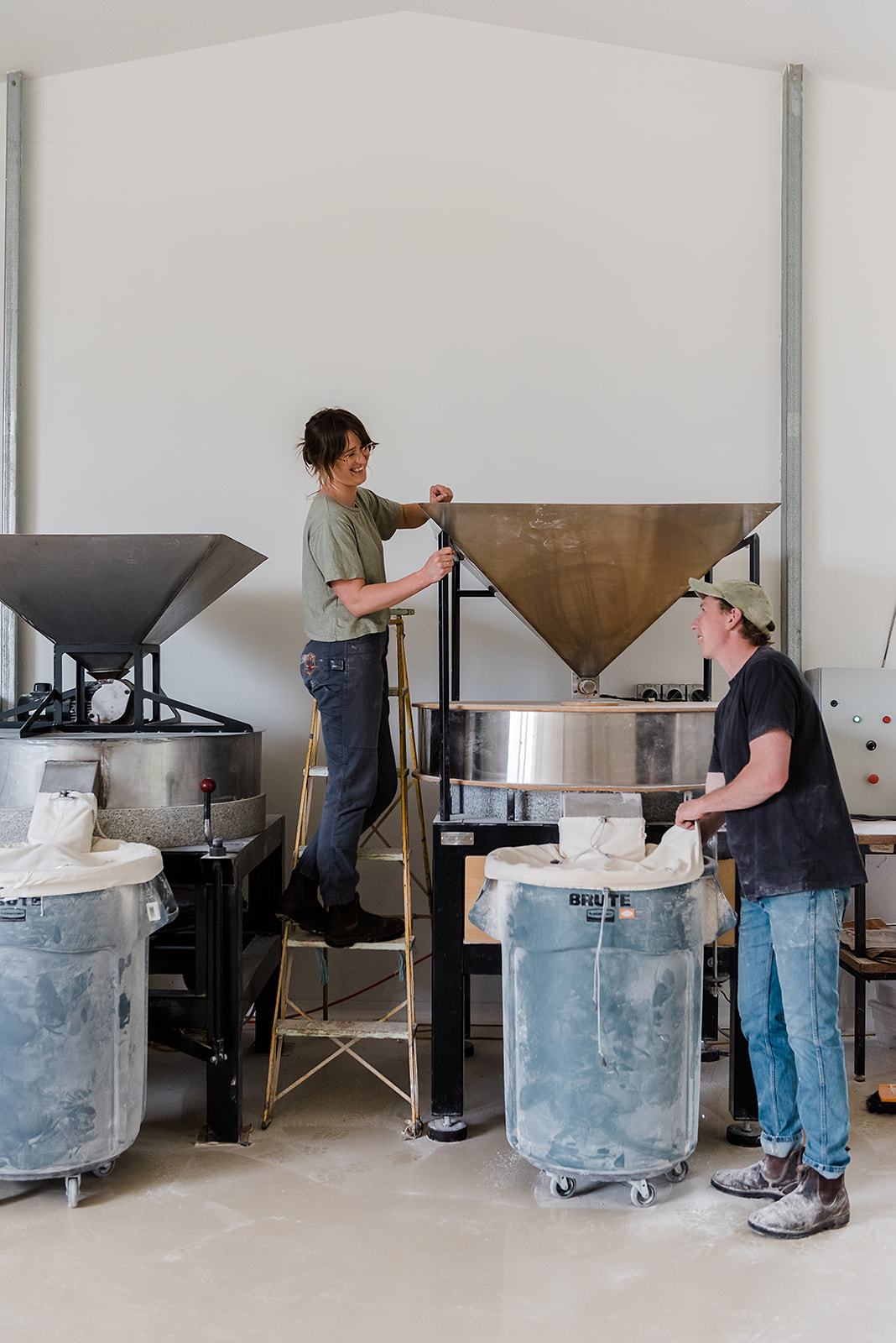

We want to be seeing more than just financial returns. We want to feel like we’re contributing to the diversity of both our ecosystem and our community.
– Courtney Young & Ian Congdon
Your product is sold at a premium, does that affect your wholesale opportunities?
Potentially, but we attract bakers who care about where their ingredients come from and so they’re happy to pay the true cost of flour (which we’d like to think is what we charge). If a baker approaches us and then walks away because of our cost, we don’t mind because we only want to work with bakers who are values-aligned with us. We are just about at capacity with our wholesale accounts so our price hasn’t impacted us that much.
What does your farming plan look like and how do you build resilience into it?
It’s evolving but at the moment we’re focusing on nailing our holistic grazing plan and our crop rotation. We’re also trying to work out fencing and tree plantings. There’s so much we could do with this little place but we’re trying to stick to the basics at the moment of understanding and monitoring our soils and planning our cropping around that. We hope that healthy soils will be the foundation of our resilience as an ecosystem, farm and family.
What does success look like for you as individuals, as a business, and for the ecosystem you are stewards of?
We try to keep our definition of success open and related to our values of connecting to land and place, community and family. If, at the end of the day, we can still find a sense of joy, then we’re doing okay! The numbers are important, but we want to be seeing more than just financial returns. We want to feel like we’re contributing to the diversity of both our ecosystem and our community.
How has regenerative farming influenced your mental health?
We think being outside, being active, eating fresh, healthy food from this landscape and understanding our interconnected role within it, is really beneficial to our mental health. We definitely feel more strung out if it’s all flour milling and no farming. We need a balance.
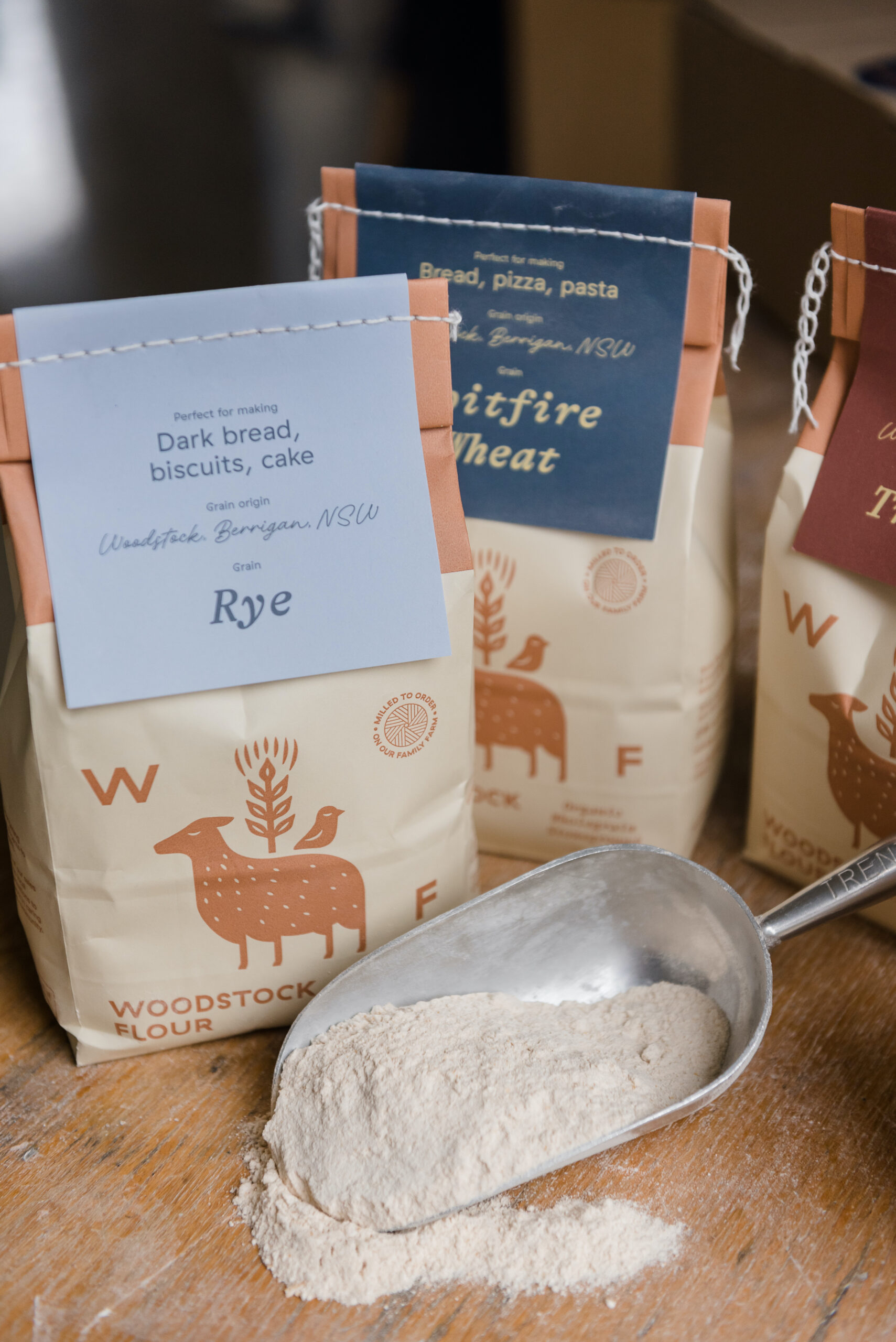
Talk to us about Tenderground, how did that initiative come about and what are its core principles?
Tenderground is an evolving collective we started with a few friends who are also farming in north-east Victoria. We would often catch up and inevitably talk farming, realising we had lots of shared challenges as well as different strengths. Hanna and Lach from Allt Farm and Dom from Why Farm suggested we should collaborate or work together somehow.
Instead of each of us rebuilding the wheel we could be sharing what we know and addressing some of the challenges young farmers face, together. We’re driven by the principles of agroecology, which include supporting diversity, resilience, collaboration and sharing, and community.
At the moment we do a mixed box of pork from Allt Farm, beef from Why Farm and lamb from us at Woodstock, and we coordinate deliveries and pick-ups together. We’re also trialing a farmers market in Melbourne and Albury.
What do you think is needed to help more young stewards establish similar models to Tenderground?
There’s this mentality in farming that you have to do everything yourself. And the family farm is put up on a pedestal. But this is hugely problematic and damaging to individuals and communities.
We’d love to see more young stewards supported through different ways of accessing land, producing food and marketing that food. And we’d love to see collaboration in the farming and marketing space encouraged and supported.
The ‘go it alone’ paradigm is changing – how would you encourage other growers to connect with each other to form collaborative support networks?
Start small by just reaching out to other farmers in your region. Get to know them and support their work! Get involved or contribute to your community by attending markets, events or running your own farmer gatherings.
Every region and farmer community is different so it needs to happen organically.
What is your advice to young farmers who are inspired by your journey and looking to follow in your footsteps?
We think our biggest strength in the beginning was our capacity to look for an opportunity. We knew that we wanted to be farming but we were pretty flexible with what that looked like. We also knew that we had to value-add our produce or the dollars wouldn’t stack up.
We took calculated risks, started small and continuously tested the waters. Having a strong market and handle on our finances has been great for our business but also made negotiating with a bank easier too. We’ve also had to be quite creative and rely on our community for things like borrowing machinery and help with livestock.
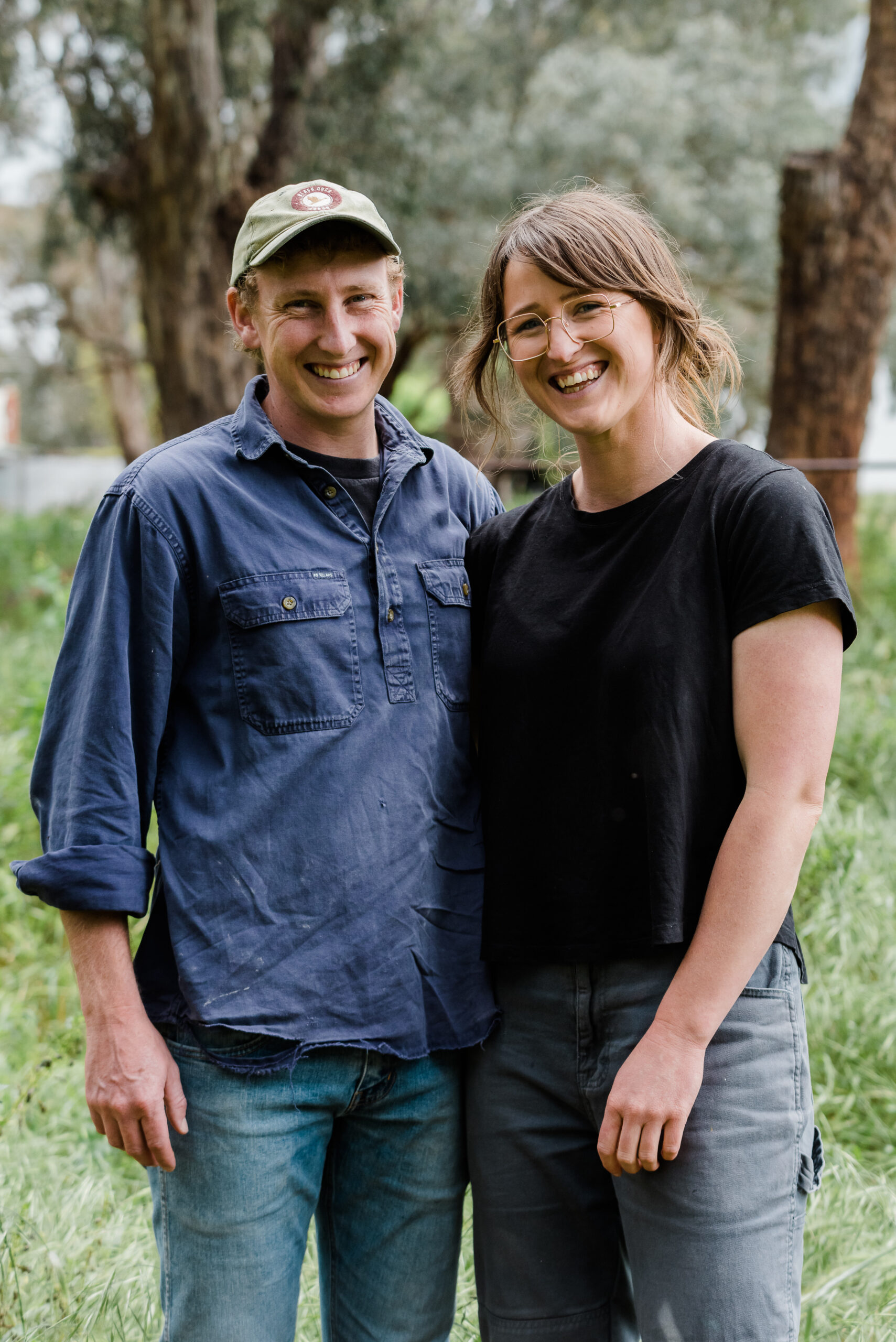
We are Ian and Courtney and we produce wholegrain, stoneground and organic flour from grain grown on our farm in Rutherglen, Victoria and our family’s farm ‘Woodstock’ in Berrigan, NSW.
Woodstock has been in Ian’s family for four generations and has been Certified Organic for 24 years. The farm integrates sheep, cattle and various crops on a beautiful 2000 acres.
Woodstock Flour was established in 2016 as a way for us to be involved in the family farm. It was founded on a love of food, family and farming.
With backgrounds in environmental conservation, we have come to see farming as a way to restore our landscape through the building of soil, biodiversity and community.
Support empowered storytelling
Your support helps us accelerate the transition to a regenerative farming future.
Follow on Socials
See what’s going on at
Woodstock Flour.
Learn More
Find out more about Woodstock Flour on their website.
